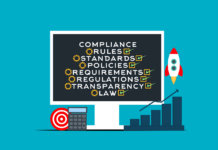Is your company’s service desk as good as it can be? On second thought, do you know whether it even meets minimum standards set forth in the official IT infrastructure library? And finally, how can you go about getting a realistic, accurate idea of how well your own organization is meeting base-level, moderate, or top-notch standards?
What Is the Library, and How Can It Serve as a Guide?
The ITIL is a collection of guidelines, intellectual property set out in a series of books for sale by owners to anyone who wants to purchase them. There is no governing board or legal entity that can give your company certification with regard to meeting the standards, but individuals in your IT department can acquire certification.
Within the library, there are hundreds of different suggestions for how to perform a wide variety of information technology activities, particularly pertaining to service management, the management of assets, and much more. If your organization is new and not very large, you can simply follow the guidelines in the library when you decide to configure your own service desk, no matter how complex or simple it is.
In this way, managers and owners can at least have a starting point for dozens of tasks that can assist them with growing a fully functioning, efficient, and reliable set of practices, all within the scope of IT management.
Achieving SD Excellence
In larger corporations, building a five-star service desk can be a massive project. It might involve a team of highly qualified experts who follow best practices and embellish the configuration with numerous add-ons like ticketing management software, advanced methods for managing requests, the management of system-wide problems, and much more.
One of the challenges owners face is that technology is constantly changing, so that whatever constitutes best practices today might not make the grade a year from now. That means management always has to be aware of the maturation of technology and the evolving definition of what a capable service desk is.
As of 2021, the vast majority of emerging and established entities look to the ITIL best practices list when they set out to create any kind of technology framework, and that includes the service desk.
This is particularly true with tickets of all kinds and complexity, service requests from multiple sources, proposed changes to the IT environment’s configuration, symptomatic problems, and all levels of incident management. These five topics are not a definitive listing by any means but represent a starting point for any IT manager who wants to build efficiency and speed into the system. Here are some of the key components of that process:
Tickets
When it comes to supporting tickets, two tasks are crucial: setting priorities among numerous incoming requests, and organizing all the tickets in such a way that none are lost, assigned to the wrong person, or assigned to more than one person. It’s important that priorities be set so that the most urgent issues are dealt with first.
Correct assignment means that each particular request is shuttled to a technician who has the ability to either resolve it as is or move it along to a more experienced person. Getting the entire ticketing situation aligned correctly is one of the central functions of a top-notch service desk.
Service Requests
Division of labor is one of the oldest management principles of all. It plays a vital role whenever an end-user requests any kind of help, whether through a ticketing system or any other source.
In fact, when a company has a handle on managing every call for service, it’s able to separate all the requests so that each technician or IT specialist only works on tasks that fall in their particular specialties. It’s basically a case of using the company’s human resources in the most efficient way possible.
Configuration Changes
If you wish to alter the configuration of the IT environment, it’s imperative to have a well-thought-out strategy, one that is based on solid principles and knowledge. For example, no changes will be effective unless they take a big picture approach and examine how the proposed change will impact the company’s related systems.
Additionally, prior to changing any tech-related configuration, management should assess the potential risk of doing so. Only then can they make an informed decision that weighs risks against benefits.
Problems
Not every incident is a simple request for assistance. Some are tell-tale signs of problems that run much deeper, even ones that are organization-wide.
Several of the IT library protocols are specifically designed to help technicians discover which incidents are routine and which ones are symptoms of a potentially diseased IT environment.
By following ITIL standards and best practices, it’s possible to implement a series of standard operating procedures for any challenge that comes along.
Incidents
A comprehensive, versatile service desk serves as a sort of one-stop shop for the management of incidents. This ad-hoc capability means technicians are able to deal with just about any end-user request, like device shutdowns, minor glitches, password problems, and any other service or app that doesn’t do what it’s designed to do.
Often, queries that come from users are related to very simple functions like getting the computer started or adjusting printer settings. In other situations, incidents can relate to large groups of users and affect the entire company’s IT environment. Following ITIL guidelines usually results in a much more efficient system for handling incidents of all types and sizes.
Taking the First Step
There’s no guarantee, of course, that if you implement the listed components that your service desk will be a standout. The devil is in the details, as the old saying advises, and that’s especially true when it comes to standards, best practices, benchmarks, and minimum requirements.
For example, large organizations typically hire ITIL-certified personnel to perform each of the tasks associated with configuring the service desk. But, even if your company is too small to do so, or can’t afford top-level help, it’s still possible to simply follow the guidelines and build a functional, responsive service desk.
Also Read: Big Data Solutions for Small Businesses!









